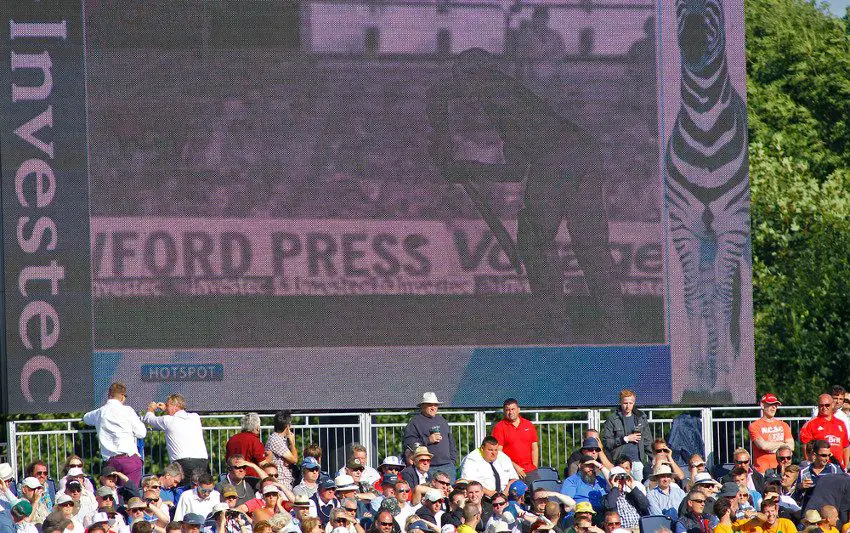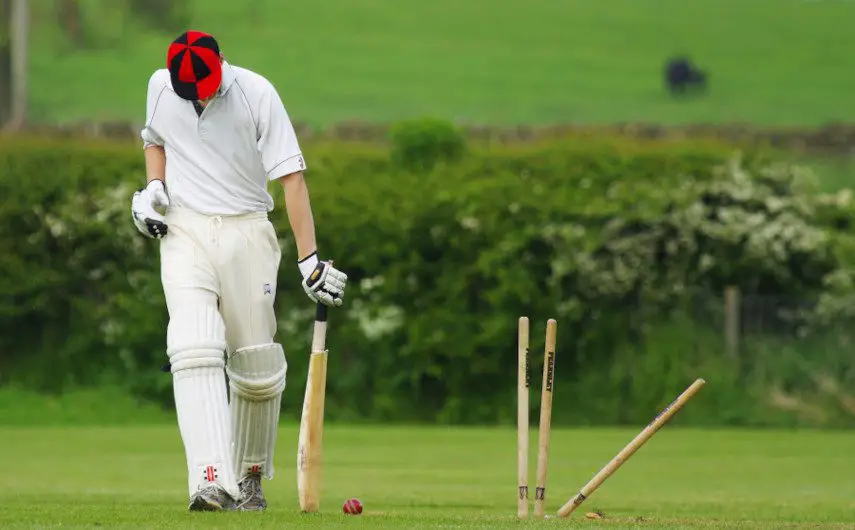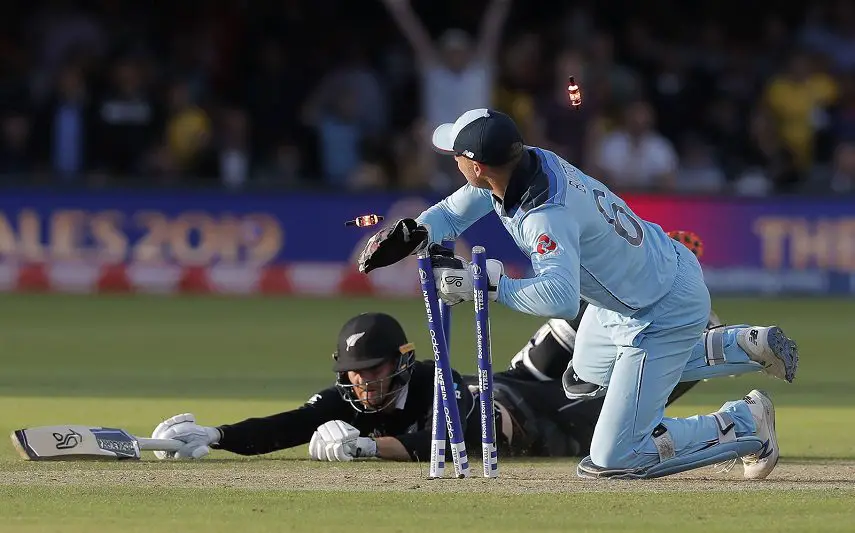Table of Contents
As one of a number of pieces of technology aimed at helping the umpires, it’s time to take a look at the mechanics behind Hotspot.
What is Hotspot in Cricket?
Hotspot is a piece of technology which is used to determine whether the ball has hit the batsman, or his/her bat or pad.
Infrared cameras are deployed to pick up what, if anything, the ball has hit after it has been delivered by the bowler. By determining those questions, hotspot helps the third umpire to rule on certain decisions.
How Does the Hotspot Technology Work?
Hotspot uses two infrared cameras which will typically be installed on the straight boundaries, just above the sightscreen. Only one of these cameras will be used to provide the footage at any one time.
This is because the action changes ends at the conclusion of each over. If a decision needs to be made involving hotspot, this will involve the front on camera only.
The camera senses heat when a collision occurs. The technology has been used in the military but, in regards to cricket, the primary function of hotspot is to sense and measure the ball striking an object.
When the ball is struck, a bright spot appears on the bat, pad or other item that has come into contact with it. By viewing the footage, the third umpire can decide what, if anything, the ball has hit, and this can assist an on field decision.


When do they use Hotspot in Cricket?
Hotspot is primarily used to adjudicate on two specific decisions – caught and LBW. Under the Decision Review System (DRS), the third umpire will use this technology to determine whether or not the ball has hit the bat.
Obviously, the ball striking bat is crucial to a caught decision and the batter cannot be given out if the ball hasn’t hit the bat, or their glove. If, however, hotspot shows a ‘nick’ on the bat, the catch can be upheld.
Hotspot can also be used in LBW decisions. When a referral is made, it’s crucial to determine where the ball has struck. For example, a batter cannot be given out LBW if the ball has hit their bat first.
In instances where hotspot is not being used as part of the referral system, it may still be deployed by any television cameras as an aid for their analysis.
Hotspot vs Other Technologies
Hotspot has two main rivals when it comes to determining this type of decision. The other methods which are used to evaluate whether the ball has struck bat, pad, batter, or anything at all, are Ultra Edge and the Snickometer.
The main difference between them is that Ultra Edge and Snicko are sound based. They are sound detection systems which are triggered by any form of contact.
Supporters of Hotspot feel that this is where it has an advantage. Because the other two mechanisms can only detect sound, they can be prone to pick up noises which have no relevance to an on field decision such as LBW or caught.
The bat hitting the ground is a common issue while Ultra Edge and The Snickometer have also been triggered by feet shuffling and hands squeaking around the bat.
Those sound based systems can also be caught out by what is commonly known as the Phantom Snick. The ball whooshing past the bat can be enough to set them off, providing it is close enough to the edge.
With hotspot, the third official can see exactly where the ball has struck and this is deemed to be a huge advantage over competing technology.
Criticism of the Hotspot Technology
Hotspot claims to offer high levels of accuracy but there have been some high profile incidents where controversial decisions seem to challenge its authenticity.
One reason why it’s not more widely used relates to the fees involved. It costs around $6000 USD a day when a two-camera system is used and that’s high when compared to its competitors.
The failure of hotspot to pick up clear nicks is also a reason why criticism is levelled at the mechanism. In the 2013 Ashes series in England, there were a number of cases where the technology failed to pick up an edge where it was clear that the ball had hit the bat.
Specific cases of hotspot errors include Rahul Dravid against England in 2011. While hotspot was inconclusive, ultra edge showed a spike and Dravid was given out.
England’s Joe Root was also a victim, believing he had clearly missed a ball from Australia’s Shane Watson. Hotspot seemed to show an edge when the visuals suggested there was a gap between bat and ball.
While the average accuracy levels are high, hotspot does seem to be capable of producing some very debatable decisions and that’s the main source of criticism.


